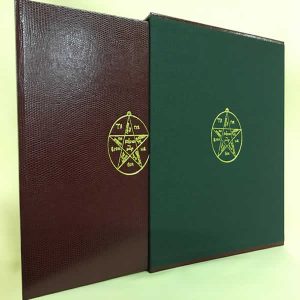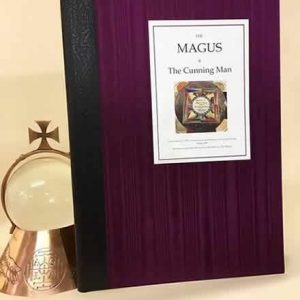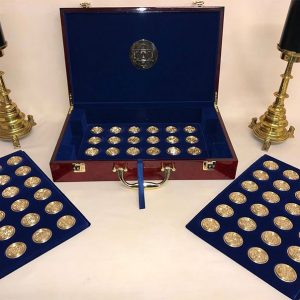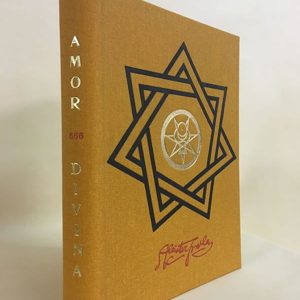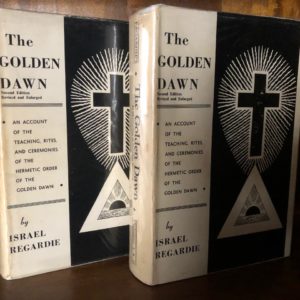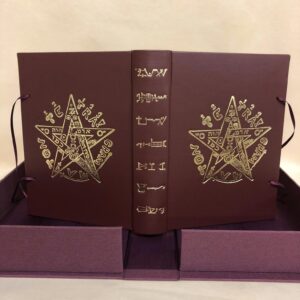THE GRIMOIRE OF HONORIUS: THE IRWIN MANUSCRIPT (100 copies) full colour facsimile of the unique manuscript copied by F.G.Irwin circa 1868. Hand bound in reptile embossed pelaque with iridescent green silk, title label, title gilt to spine.

An exceptional example of a fully preserved black magic text reproduced in full.
Irwin was a member of the secret ‘Society of Eight’ a small esoteric group that connected the early Societas Rosicruciana in Anglia with the Hermetic Order of the Golden Dawn.

The present manuscript is a full colour facsimile from the original scans made when the manuscript was carefully taken out of its binding in 2004. The original pages were in a 19th century lined notebook composed of two types of notepaper (lined wove ivory and a further light blue fine notepaper for the illustrations and additional material). The page size has been slightly enlarged to aid reading and page numbers have been added to ease reference while working with this grimoire.
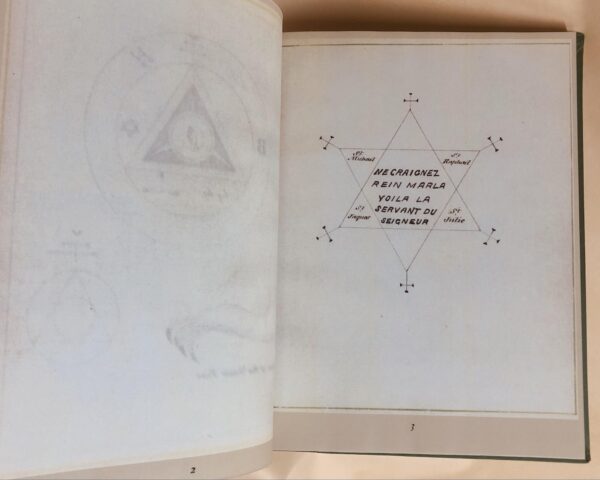
Redundant blank pages are not reproduced, but blanks on the reverse of illustrations are retained to maintain the balance of the print and to present the feel of the original manuscript to the modern reader. No additional modern contents page or index etc has been added as this was felt to be out of keeping with the feel of the publication.

Contents: The text is in two parts. The first is a Grimoire written in 17th Century France and spuriously attributed to the much earlier Pope. The second part is an extensive collection of charms and spells from folk magic and the practice of cunning sorcery.

The process of the first part is one of gaining ascendancy over the rebellious spirits deputising authority over the infernal daemons. This authority can be invoked by the magician so that various daemons may be summoned and compelled to provide service. The most conjurations appear for Lucifer though a great range of daemonic names are given. This approach is by not unique in grimoire literature and may represent a proto-gnostic response to Christian orthodoxy.

Certainly the 72 names of God invoked after the Holy Trinity contains many Gnostic terms as well as some Kabbalistic names. There are also Gnostic resonances and Kabbalistic terms used in the names used to conjure the demons. It must be said that the collection of rituals is very extreme and its deep connections with the tradition of the black arts makes this a radical as well as beautiful acquisition.



